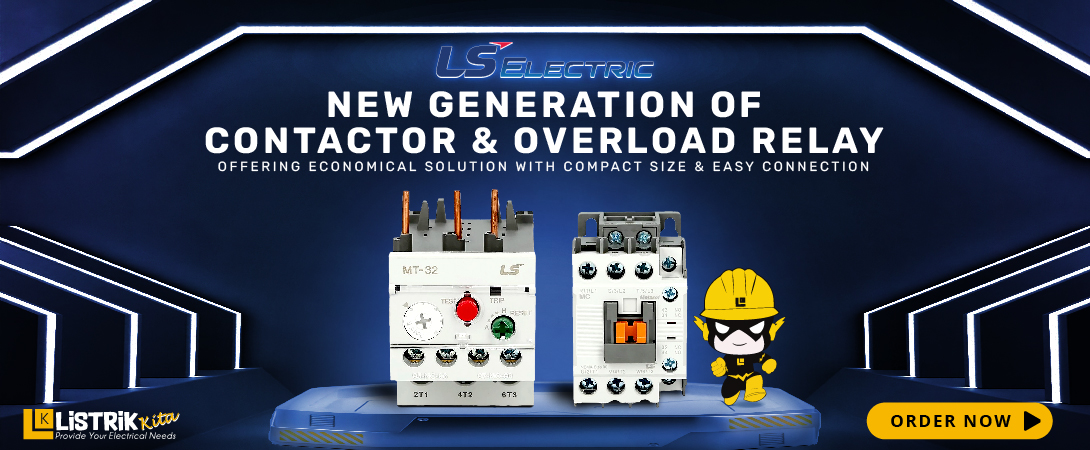
A contactor is an electrical device that works by electromagnetic induction in a copper coil (coil) through which electric power flows, causing a magnetic field which causes the NO (Normally Open) Auxiliary Contact to close and the NC (Normally Close) Auxiliary Contact to open. The contactor will function if electricity is supplied to the copper coil. When the contactor's electromagnetic coil is given an AC power source, the contactor switch will connect or change its condition from OFF to ON and vice versa, from ON to OFF.
The contactor has the function of connecting and disconnecting electric current. Usually used for motor, heater, lighting or electrical power distribution applications in factories or housing.
The contacts on the contactor consist of 2, namely the main contact and the auxiliary contact.
- Main Contact: Used for power circuit
- Auxiliary Contact: Used for control circuits.
A thermal overload relay is a device that protects the circuit from overcurrent caused by a load that is too large by breaking the circuit when the current exceeds the setting. If the current exceeds a preset limit for a predetermined time, the overload relay will trip, activating an additional contact that disconnects the motor control circuit and deactivates the contactor.
A thermal overload relay is a switch that is sensitive to temperature and will open and close when the temperature exceeds a pre-set or determined limit. So, if the current exceeds the setting, A thermal overload relay will send a signal (NC-NO contact position changes) to the electrical circuit.
Following are the important advantages of thermal overload relay:
- Reliable protection
- Compatible with the contactor
- Easy-to-use starter
- Mounting kits for specific applications are provided.
The way the thermal overload relay works is by converting the flowing current into heat to affect the bimetal. This bimetal is what moves the lever to stop the flow of citric in the motor via a starter motor control. There are two types of bimetal breakers, namely single-phase and three-phase. Each phase consists of a bimetal, which is separate but connected to each other and is useful for disconnecting all phases if an overload occurs.
The LS Electric Contactor and Thermal Overload Relay is suitable for controlling, protecting, and replacing LS Electric control components. This component aims to save space, provide flexibility, be comfortable and easy to install, and be installed via various accessories.
The LS Electric Contactor and Thermal Overload Relay is designed to be closed, increasing its security capabilities so that no electric sparks (arc flashes) appear, adapting its capabilities as industrial equipment. The Metasol series adopts a simple and sophisticated design for its products.
The characteristics of the LS Electric Contactor and Thermal Overload Relay are:
- High Performance
- Reliability persists in the system: Type∥ coordination
- A perfect system with peripheral devices
- No arc exposure through enclosed structures
- User convenience
- A one-touch connection with Din Rail
- Simple wiring with adapter, reversing cable set
- 4 terminal type: Easy operation coil wiring
- Screw terminal module type
- Interlock unit with built-in auxiliary contact (built-in 2NO)
Come on, order Schneider Electric products now click here!



